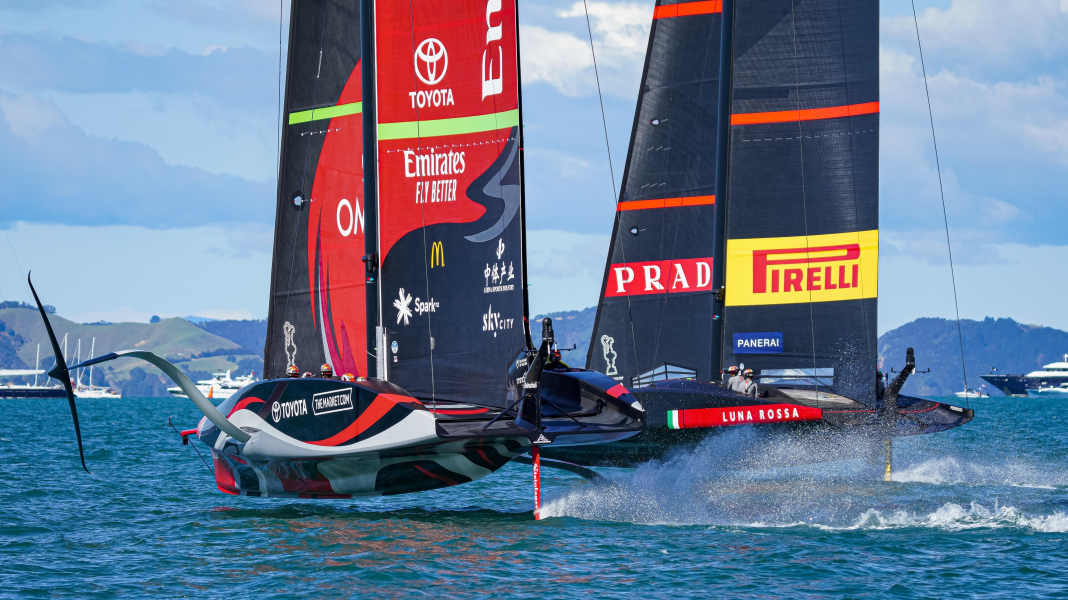
After four races, the score is 2:2, a draw between challenger Luna Rossa and defender Team New Zealand. What had already been foreshadowed after the two opening races was confirmed on the second day of racing: The starts decide between victory and defeat in these light windy, consistent conditions.
There were only marginal differences in speed between the boats of the two teams in winds of between eight and ten knots. Experts identified a slight advantage for the Italians upwind, as they were able to sail slightly higher than the New Zealanders in some situations, while the latter were slightly faster over all courses, although this was only noticeable downwind. However, these differences were not enough to give them the upper hand over their opponents. The races were decided by the tacticians in conjunction with the execution of the manoeuvres, i.e. by the sailors rather than the technique.
"The boats are very evenly matched," said Peter Burling, helmsman of the New Zealanders, after the races, "which makes it interesting on the sailing side." Francesco Bruni of the Italians added: "There are a few small differences, but they are so small that one mistake is enough to decide a race."
The coming days also promise to be exciting. From now on, two races will be sailed every day until a winner is determined, i.e. one team has won seven times. For the next two to three days, light wind conditions are again on the cards, in which both teams seem to feel comfortable.
When asked about a supposed slight advantage for the Italians, which could put them in the role of favourites, Jimmy Spithill said: "I still see us in the role of the weaker team. The New Zealanders are sailing on their home turf and have enormous support from their fans here."
Race 3
Both boats are at zero on the line with wind from starboard, the Italians to windward, New Zealand to leeward. Jimmy Spithill, the Australian co-skipper of the Italians, who is on the wheel on this bow, manages to keep a sufficient distance to leeward of the New Zealanders. It's exactly what every child is taught by their coach during regatta training: at the start, keep as little distance as possible to windward and as much as possible to leeward. Because if the distance to windward is small, the windward boat will hardly be able to maintain this position. It will be sucked into the leeward boat, lose speed, have to tack away or dive behind it. This phenomenon should be seen in the second race of the day. To prevent this from happening to you, the distance to leeward must be large.
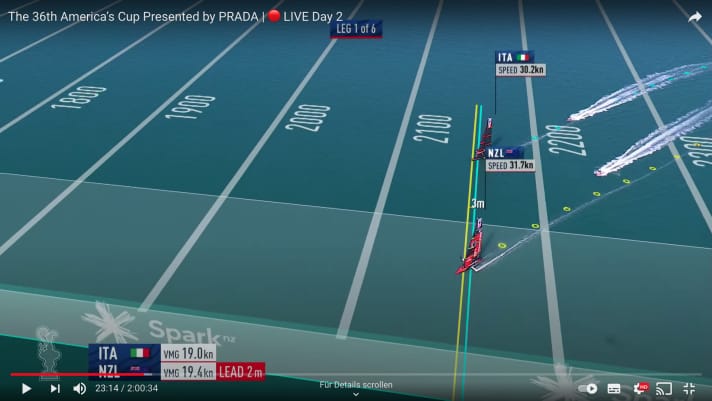
The Italian boat is able to keep to windward of the Italians until it reaches the left-hand course limit. The Italians have to tack because of the boundary, but have the right of way. Together with his counterpart on the port side of the boat, the Italian Francesco Bruni, Spithill succeeds in delaying his own tack for so long and executing it so perfectly that the Italian boat is in exactly the same position after the manoeuvre as described at the beginning: close to the opponent upwind, and even slightly ahead.
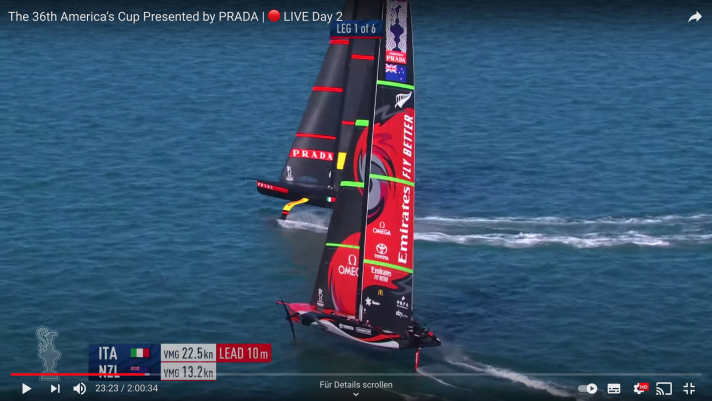
The Italians can switch to high mode, in which they sail a little slower but higher. The New Zealanders are unable to stay upwind, sinking further and further towards the Italians, who pull out below them. The New Zealanders have to dive behind the Italians, into their disturbed downwind. It is the decider in this race. The Italians extend their lead and do not relinquish it until the finish.
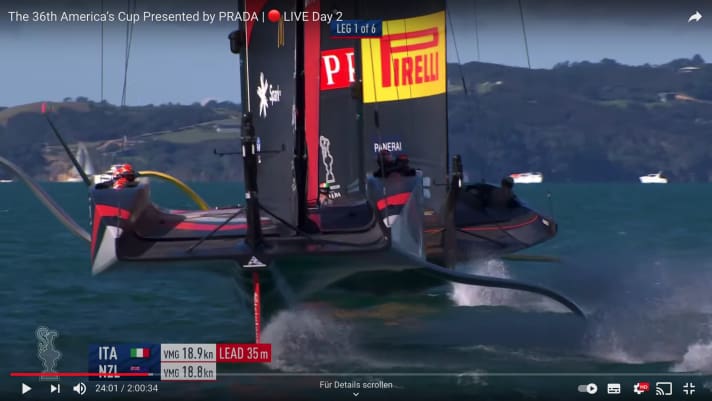
Francesco Bruni said after the race: "It was close. It was a matter of two or three seconds. You have to catch exactly the right moment for the tack and execute it perfectly. Jimmy (Spithill) did an excellent job at the start when he positioned us so that we made it to the limit."
Race 4
The start was like a copy of the previous one, but with a different outcome. Once again the New Zealanders were downwind with wind from starboard, the Italians upwind - but this time too close to the New Zealanders. The reason for this is the behaviour of the New Zealanders. They briefly fall off the foils, whether intentionally or not cannot be determined, and sail in so-called skimming mode, in which the lower part of the hull is in the water but the boat has not yet sunk completely. They are slow in this mode. The Italians, however, come from behind fully foiling and catch up with the New Zealanders. There is not enough time before the start to pass behind them and take up a leeward position. They decide in favour of the windward position, but are too close to the New Zealanders.
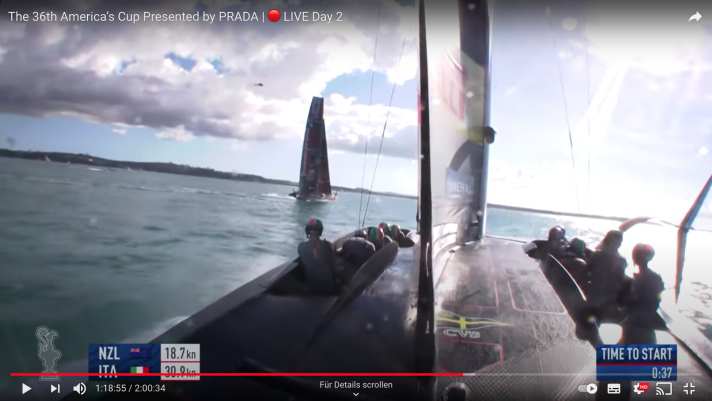
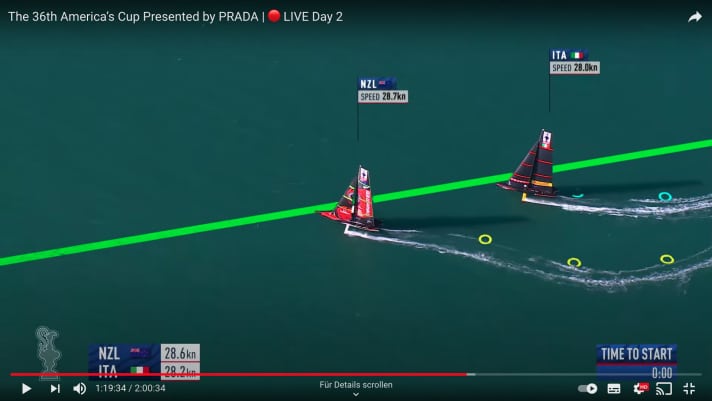
They turn the tables, go into high mode immediately after the start, "squeeze" the Italians upwind, they sink onto the New Zealanders and have to tack away with less speed in the boat. This gives the New Zealanders a decisive lead of around 50 metres, which is enough to prevent them from getting involved in right of way situations with the Italians up to the windward gate and to be able to control them loosely.
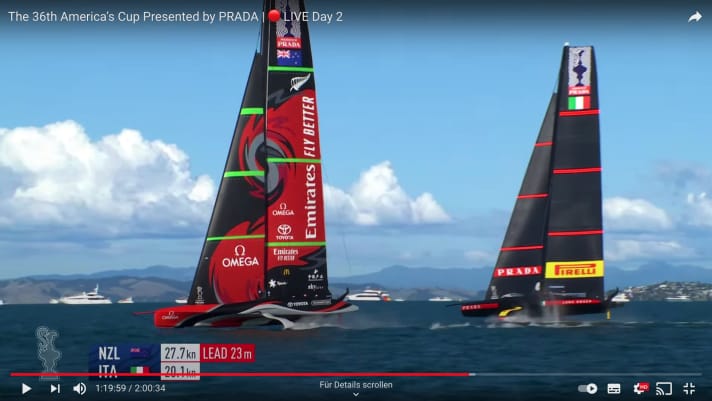
After the downwind leg, shortly before the leeward gate, the Italians are only about 170 metres behind, so they are still within striking distance. However, during the last gybe to the leeward gate, with which they want to create the so-called split, i.e. a counter-course to the opponent, which should always be sought as a boat behind without a speed advantage, the foil on the new leeward side is mishandled. It is not yet fully in its lowest position when the load changes from one bow to the other, the boat leans to leeward, the boom arm pulls briefly through the water and creates a lot of resistance. The engines are slow to bring the foil arm into the optimum position against the pressure of the foil. Overall, so much speed is lost that the New Zealanders pull away to over 400 metres - the final decision. Bruni blames himself for the mishandling of the foil: "I missed the button."

